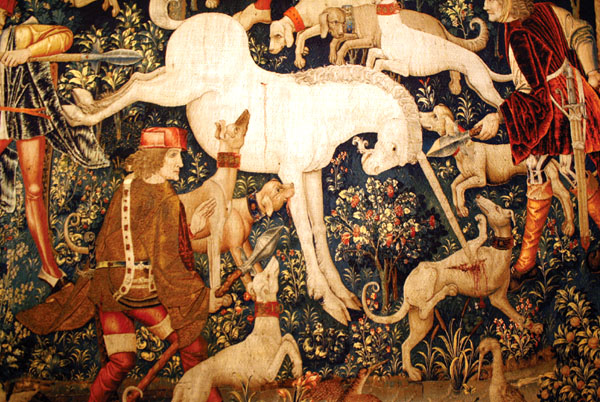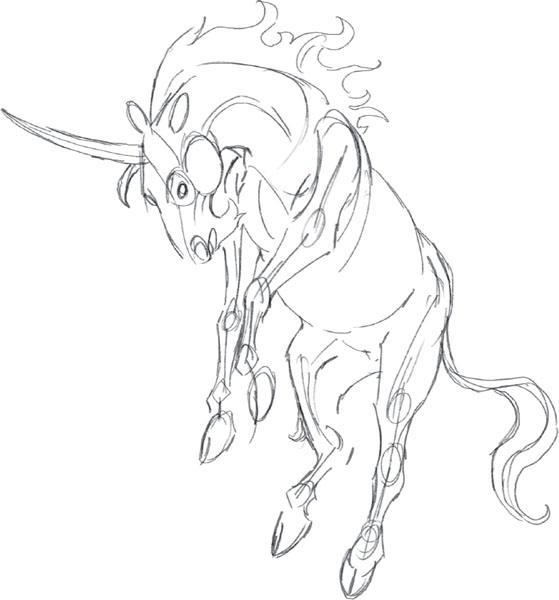Unicorn

History
No other creature captures the imagination of the medieval bestiary better than the unicorn. What is described as a horned horse is in fact a beast of immense power and beauty. Almost always described as a pure white stallion with a majestic horn, in medieval Europe the unicorn was an important symbol of Christ—a pure and powerful creature that was betrayed, captured and sacrificed. It is believed the unicorn was a Christian adaptation of the Celtic white stag, which represented the power of nature and was an avatar of the gods.
Known to live in the forests of Europe, the unicorn was so formidable a beast with its slashing horn that hunters with spears and hounds could not bring it down. Though an herbivore, the unicorn was feared to be as dangerous a woodland creature as the wild boar. It was believed that the power of the unicorn was contained within its horn, which was prized for its medicinal qualities. The unicorn’s weakness, however, was that the purity and goodness of a maiden could tame it like a puppy. Hunters used maidens as bait to lure and trap unicorns to be slain. According to medieval bestiaries and illustrations, the unicorn is about the size of a pony or deer, not a full-sized horse. A second distinction from the horse is its cloven, goatlike hooves and distinctive goatee and tail. It is possible that the unicorn was a wild woodland species of the Caprinae family. Contemporary historians have suggested that rare narwhal horns from the north gave rise to the legend of the unicorn. The United Kingdom to this day employs the symbols of the lion and the unicorn on its coat of arms.


Detail From The Hunt of the Unicorn Tapestries (Circa 1500), Collection of Metropolitan Museum of Art in New York City
Demonstration
UNICORN


1 Concept and Design Stage
The design of a unicorn should suggest the purity and power of this magical beast. Unicorns are so commonly associated in pop culture with rainbows and flowers that it can be a challenge to portray the beast in a serious light. The unicorn is not just a horse with a horn on its head, but has the features of other equines, deer and goats.

2 Skeletal Frame Sketch
To design my unicorn, I started out with reference of bucking broncos to achieve its rampant pose.

3 Detailed Pencil Sketch
Render the details in pencil such as the shading, the fine tail and the mane, the cloven hooves and the horn.

4 Underpainting
Apply general layers of color in a loose fashion to establish the forms. Rough brushmarks are okay at this point as you develop the details.

5 Finishing Details
Add final details with small brushes and opaque paint to bring the painting to life. Keep painting and making adjustments until you are satisfied with the results.

Detail of Finished Unicorn Head